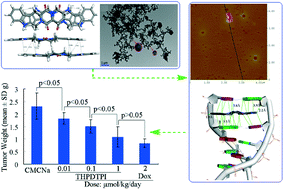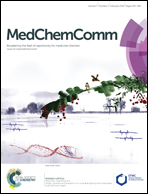Abstract
Based on the knowledge that cyclohexane-1,4-dione, piperazine and β-carboline are the essential building blocks of DNA intercalators, β-carboline-3-carboxylic acid is a π–π stack-like DNA intercalator, and β-carboline derivatives can form nanoparticles, this paper hypothesized that (2′S,5′S)-tetrahydropyrazino[1′,2′:1,6]- di{2,3,4,9-tetrahydro-1H-pyrido[3,4-b]indole}-1′,4′-dione (THPDTPI) would be a π–π stacking lead nano-intercalator. The docking investigation found that THPDTPI can intercalate into DNA in a π–π stacking manner. The simple condensation of 3S-1,2,3,4-tetrahydro-β-carboline-3-carboxylic acid provided THPDTPI in good yield and high purity. The TEM, SEM and AFM imaging visualized that THPDTPI formed nanoparticles in ultrapure water, in the solid state and in rat plasma. The Faraday–Tyndall effect proved that THPDTPI exhibited nano-properties in pH 2.0 and pH 7.0 water. Spectrophotometric assays suggested that the interaction model of THPDTPI and CT DNA was π–π stacking intercalation. In vivo THPDTPI dose-dependently slowed the tumor growth of S180 mice with a minimal effective dose of 0.01 μmol kg−1 per day. In vitro THPDTPI exhibited anti-proliferation activities on S180 and HeLa cells with IC50 values of 0.39 and 3.5 μM, respectively. Even when the single dose was raised up to 10 000 fold of the minimal effective dose, i.e. 100 μmol kg−1, THPDTPI still did not show liver, kidney and systemic toxicity in mice. These findings provide a strategy for designing THPDTPI-like π–π stacking nano-intercalators.


 Please wait while we load your content...
Please wait while we load your content...